Healthy Eating Learning Opportunities and Nutrition Education
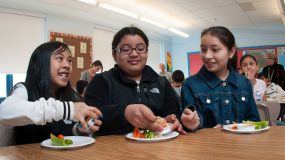
Healthy eating learning opportunities includes nutrition education and other activities integrated into the school day that can give children knowledge and skills to help choose and consume healthy foods and beverages. 1 Nutrition education is a vital part of a comprehensive health education program and empowers children with knowledge and skills to make healthy food and beverage choices. 2-8
US students receive less than 8 hours of required nutrition education each school year, 9 far below the 40 to 50 hours that are needed to affect behavior change. 10,11 Additionally, the percentage of schools providing required instruction on nutrition and dietary behaviors decreased from 84.6% to 74.1% between 2000 and 2014. 9
Given the important role that diet plays in preventing chronic diseases and supporting good health, schools would ideally provide students with more hours of nutrition education instruction and engage teachers and parents in nutrition education activities. 5, 12 Research shows that nutrition education can teach students to recognize how healthy diet influences emotional well-being and how emotions may influence eating habits. However, because schools face many demands, school staff can consider ways to add nutrition education into the existing schedule. 11
Nutrition education can be incorporated throughout the school day and in various locations within a school. This provides flexibility allowing schools to use strategies that work with their settings, daily schedule, and resources.
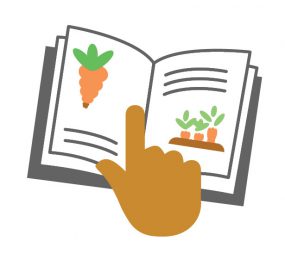
In the Classroom
Nutrition education can take place in the classroom, either through a stand-alone health education class or combined into other subjects including 2,5 :
- Counting with pictures of fruits and vegetables.
- Learning fractions by measuring ingredients for a recipe.
- Examining how plants grow.
- Learning about cultural food traditions.
Nutrition education should align with the National Health Education Standards and incorporate the characteristics of an effective health education curriculum .
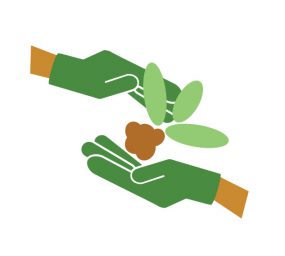
Farm to School
Farm-to-school programs vary in each school or district, but often include one or more of the following strategies:
- Purchasing and serving local or regionally produced foods in the school meal programs.
- Educating students about agriculture, food, health, and nutrition.
- Engaging students in hands-on learning opportunities through gardening, cooking lessons, or farm field trips.
Students who participate in farm-to-school activities have increased knowledge about nutrition and agriculture, are more willing to try new foods, and consume more fruits and vegetables. 14-17
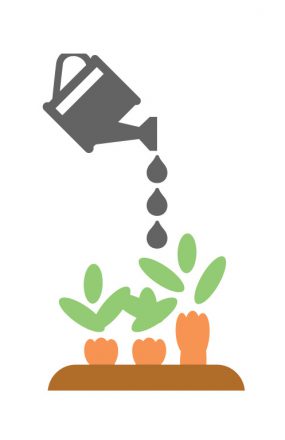
School Gardens
School garden programs can increase students’ nutrition knowledge, willingness to try fruit and vegetables, and positive attitudes about fruits and vegetables. 18-22 School gardens vary in size and purpose. Schools may have window sill gardens, raised beds, greenhouses, or planted fields.
Students can prepare the soil for the garden, plant seeds, harvest the fruits and vegetables, and taste the food from the garden. Produce from school gardens can be incorporated into school meals or taste tests. Classroom teachers can teach lessons in math, science, history, and language arts using the school garden.
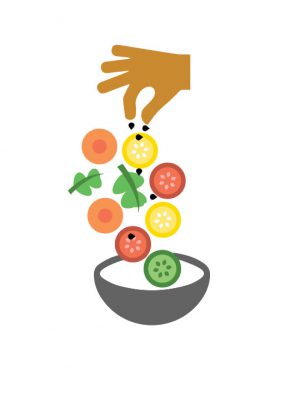
In the Cafeteria
Cafeterias are learning labs where students are exposed to new foods through the school meal program, see what balanced meals look like, and may be encouraged to try new foods through verbal prompts from school nutrition staff, 23 or taste tests. 24-25 Cafeterias may also be decorated with nutrition promotion posters or student artwork promoting healthy eating. 24
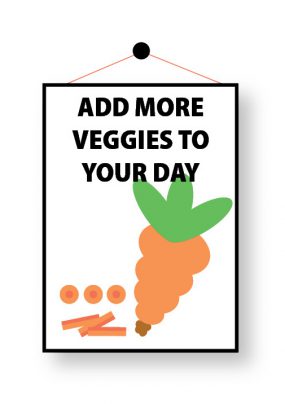
Other Opportunities
Schools can add messages about nutrition and healthy eating into the following:
- Morning announcements.
- School assemblies.
- Materials sent home to parents and guardians. 24
- Staff meetings.
- Parent-teacher group meetings.
These strategies can help reinforce messages about good nutrition and help ensure that students see and hear consistent information about healthy eating across the school campus and at home. 2
Shared use agreements can extend healthy eating learning opportunities. As an example, an after-school STEM club could gain access to school gardens as learning labs.
CDC Parents for Healthy Schools: Ideas for Parents
Nutrition: Gardening Interventions | The Community Guide
Dietary Guidelines for Americans, 2020–2025
Introduction to School Gardens
Learning Through the Garden
National Farm-to-School Network
National Farm to School Network Resource Database
National Health Education Standards
Team Nutrition Curricula
USDA Farm to School
USDA Team Nutrition
- Centers for Disease Control and Prevention. School health guidelines to promote healthy eating and physical activity. MMWR Morb Mortal Wkly Rep . 2011;60(RR-5):1–76.
- Joint Committee on National Health Education Standards. National Health Education Standards: Achieving Excellence. 2nd ed. Atlanta, GA: American Cancer Society; 2007.
- Centers for Disease Control and Prevention. Health Education Curriculum Analysis Tool, 2012, Atlanta, GA: Centers for Disease Control and Prevention, US Department of Health and Human Services; 2012. Available at http://www.cdc.gov/healthyyouth/hecat/index.htm. Accessed April 9, 2019.
- Price C, Cohen D, Pribis P, Cerami J. Nutrition education and body mass index in grades K–12: a systematic review. J Sch Health. 2017;87:715–720.
- Meiklejohn S, Ryan L, Palermo C. A systematic review of the impact of multi-strategy nutrition education programs on health and nutrition of adolescents. J Nutr Educ Behav . 2016;48:631–646.
- Silveira JA, Taddei JA, Guerra PH, Nobre MR. The effect of participation in school-based nutrition education interventions on body mass index: A meta-analysis of randomized controlled community trials. Prev Med . 2013;56:237–243.
- County Health Rankings and Roadmaps. School-based Nutrition Education Programs website. http://www.countyhealthrankings.org/take-action-to-improve-health/what-works-for-health/policies/school-based-nutrition-education-programs . Accessed on April 9, 2019.
- Results from the School Health Policies and Practices Study 2014 . Atlanta, GA: Centers for Disease Control and Prevention; 2014.
- Connell DB, Turner RR, Mason EF. Results of the school health education evaluation: health promotion effectiveness, implementation, and costs . J Sch Health . 1985;55(8):316–321.
- Institute of Medicine. Nutrition Education in the K–12 Curriculum: The Role of National Standards: Workshop Summary. Washington, DC: The National Academies Press; 2014.
- Murimi MW, Moyeda-Carabaza AF, Nguyen B, Saha S, Amin R, Njike V. Factors that contribute to effective nutrition education interventions in children: a systematic review. Nutr Rev . 2018;76(8):553–580.
- Hayes D, Contento IR, Weekly C. Position of the American Dietetic Association, School Nutrition Association, and Society for Nutrition Education: comprehensive school nutrition services. J Acad Nutr Diet . 2018; 118:913–919.
- Joshi A, Misako Azuma A, Feenstra G. Do farm-to-school programs make a difference? Findings and future research needs . J Hunger Environ Nutr . 2008;3:229–246.
- Moss A, Smith S, Null D, Long Roth S, Tragoudas U. Farm to school and nutrition education: Positively affecting elementary school-aged children’s nutrition knowledge and consumption behavior. Child Obes . 2013;9(1):51–6.
- Bontrager Yoder AB, Liebhart JL, McCarty DJ, Meinen A, Schoeller D, Vargas C, LaRowe T. Farm to elementary school programming increases access to fruits and vegetables and increases their consumption among those with low intake . J Nutr Educ Behav . 2014;46(5):341–9.
- The National Farm to School Network. The Benefits of Farm to School website. http://www.farmtoschool.org/Resources/BenefitsFactSheet.pdf . Accessed on June 14, 2019.
- Berezowitz CK, Bontrager Yoder AB, Schoeller DA. School gardens enhance academic performance and dietary outcomes in children. J Sch Health . 2015;85:508–518.
- Davis JN, Spaniol MR, Somerset S. Sustenance and sustainability: maximizing the impact of school gardens on health outcomes. Public Health Nutr . 2014;18(13):2358–2367.
- Langellotto GA, Gupta A. Gardening increases vegetable consumption in school-aged children: A meta-analytical synthesis. Horttechnology . 2012;22(4):430–445.
- Community Preventative Services Task Force. Nutrition: Gardening Interventions to Increase Fruit and Vegetable Consumption Among Children. Finding and Rationale Statement .. https://www.thecommunityguide.org/sites/default/files/assets/Nutrition-Gardening-Fruit-Vegetable-Consumption-Children-508.pdf . Accessed on May 16, 2019.
- Savoie-Roskos MR, Wengreen H, Durward C. Increasing Fruit and Vegetable Intake among Children and Youth through Gardening-Based Interventions: A Systematic Review. Journal of the Academy of Nutrition and Dietetics 2017;11(2):240–50.
- Schwartz M. The influence of a verbal prompt on school lunch fruit consumption: a pilot study. Int J Behav Nutr Phys Act. 2007;4:6.
- Fulkerson JA, French SA, Story M, Nelson H, Hannan PJ. Promotions to increase lower-fat food choices among students in secondary schools: description and outcomes of TACOS (Trying Alternative Cafeteria Options in Schools). Public Health Nutr. 2003 ;7(5):665–674.
- Action for Healthy Kids. Tips for Hosting a Successful Taste Test website. http://www.actionforhealthykids.org/tools-for-schools/find-challenges/classroom-challenges/701-tips-for-hosting-a-successful-taste-test . Accessed on May 19, 2019.

Healthy Youth
To receive email updates about this page, enter your email address:

Exit Notification / Disclaimer Policy
- The Centers for Disease Control and Prevention (CDC) cannot attest to the accuracy of a non-federal website.
- Linking to a non-federal website does not constitute an endorsement by CDC or any of its employees of the sponsors or the information and products presented on the website.
- You will be subject to the destination website's privacy policy when you follow the link.
- CDC is not responsible for Section 508 compliance (accessibility) on other federal or private website.
- Resource Library
Healthy Eating Toolkit
Feast on these nutrition resources—for use at home or at school—to get your kids or students inspired to eat better and build healthy habits.
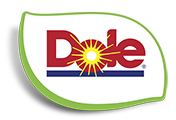
About the toolkit
Encourage healthy eaters
This interactive toolkit, sponsored by Dole, is your one-stop shop for all things nutrition. Eating better helps improve kids’ learning, behavior, and emotional health, so start building healthy habits with these recipes, resources, and ideas on a variety of topics. Check back regularly for new and updated content.
Create healthy learners
This interactive toolkit, sponsored by Dole, is your one-stop shop for all things nutrition. Eating better helps improve kids’ learning, behavior, and emotional health, so start building healthy habits with these recipes, resources, and ideas on a variety of topics that can be incorporated into the school day. Check back regularly for new and updated content.
Nutrition Based Physical Activity Games
Healthy on a budget.
For school fundraisers, instead of selling candy, chocolate, and cookies…
…sell fresh produce baskets, homemade granola, trail mix, or yogurt pops.
Feelings of Food: Exploring the Mind Body Connection
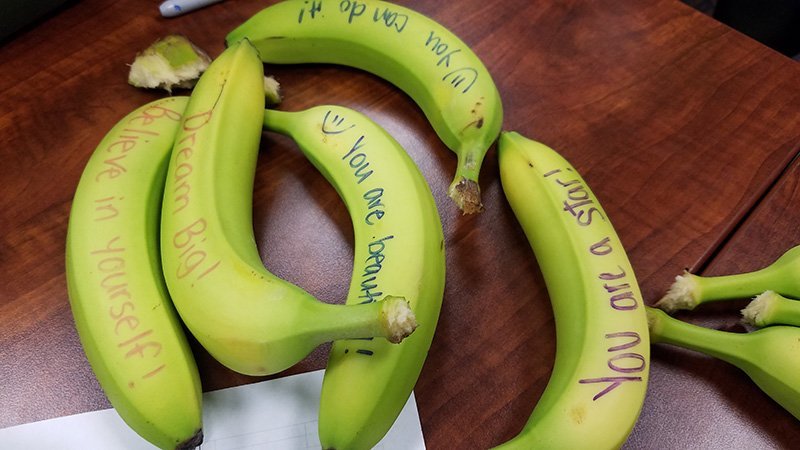
Add positive vibes to your child’s snack or lunch with an encouraging “bananagram.”
Ways to take action at your child's school
Eating healthy at home.

Healthy Breakfast at Home
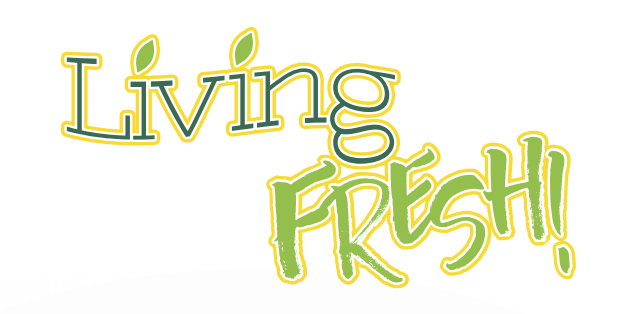
Need a healthy recipe for a sick day? How about a Meatless Monday? The Dole Living Fresh guide has recipes for any occasion.
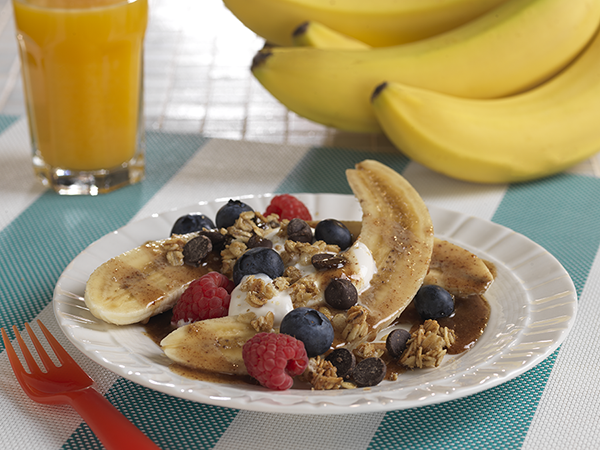
Breakfast Banana Split

Snack Time at Home
For school fundraisers, instead of gift certificates to fast food restaurants…
…try a healthy cooking competetion or sell a family recipes cookbook.
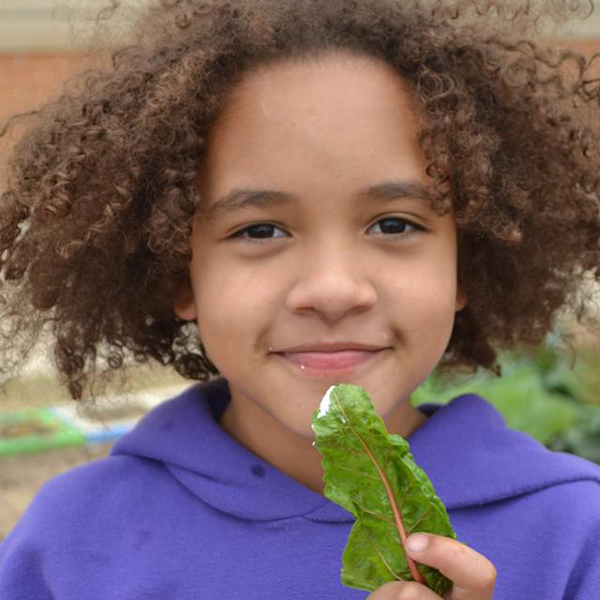
Want kids to love vegetables? Try these tips.
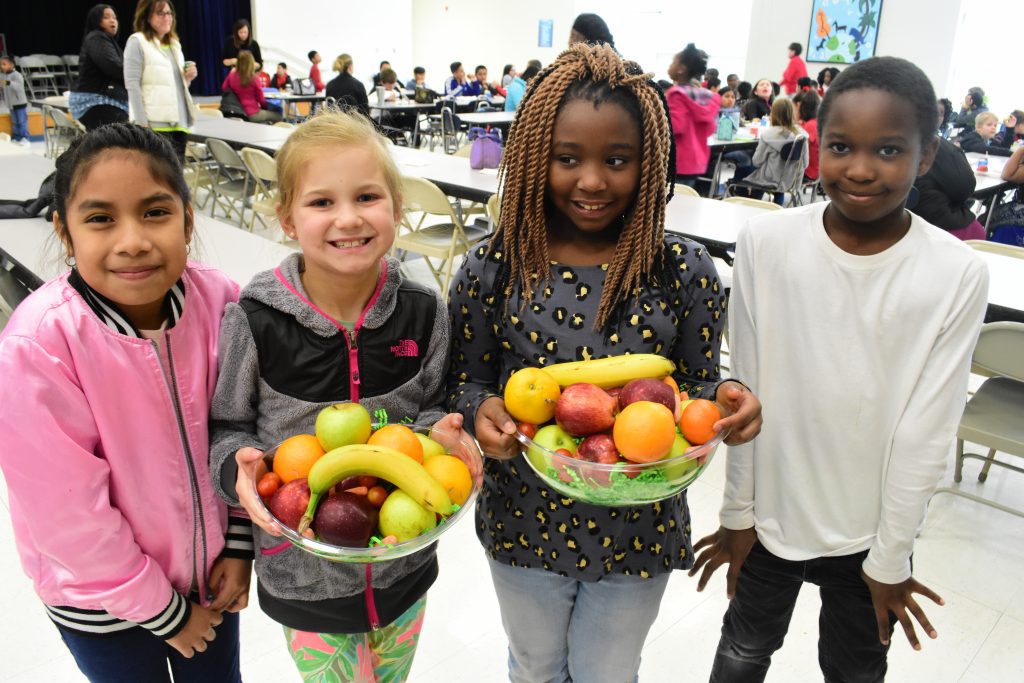
Load Up on Fruits & Veggies
Nutrition bang for your buck: Check out Dole’s Budget Cookbook with 25 easy, healthy, and affordable recipes.

Build a Healthier School Food Culture
Need to hydrate? Instead of soda, sugary juices, and sports drinks…
…offer sparkling water, squeeze your own juice, and flavor water with fresh fruit and herbs.
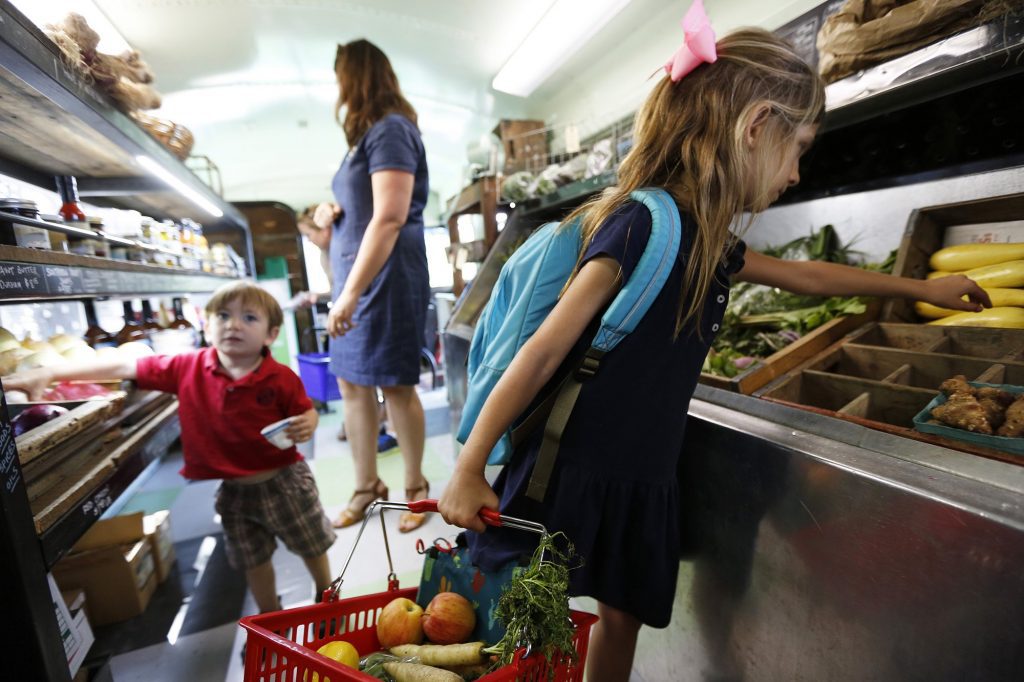
Shopping with the Seasons
How does school lunch work.
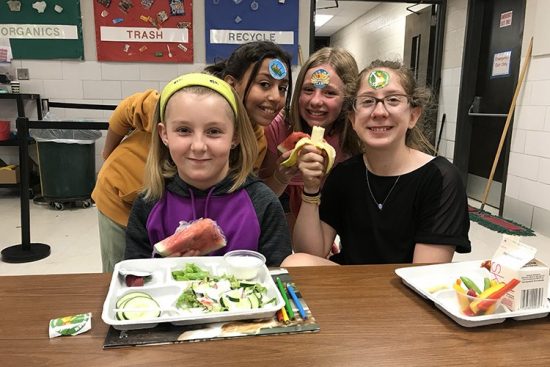
Transform School Lunch
Sip smarter.

Incorporating Nutrition Education into Your Home Routine
Fundraising: healthier ways to rake it in, the benefits of eating meals as a family.

How to Read Nutrition Facts Labels

Healthy Eating Tips for Healthy Holiday Parties
Tips for freezing fresh produce, tip sheet: strategies for picky eaters, quiz for kids: what's the better option, quiz for kids: what's the better option.

Tip Sheet: Healthy on a Budget
Nutrition action plan template.
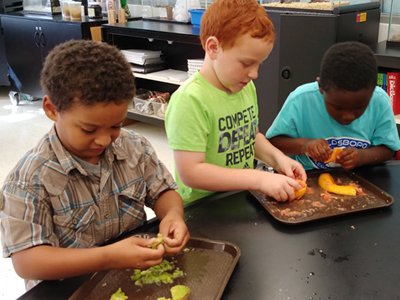
Help “ progress towards produce ” by using sensory experiences to introduce kids to fruits and veggies.
Gosh-Golly-Gee Pineapple & Carrot Smoothie Remix
Gosh-golly-gee pineapple & carrot smoothie remix.
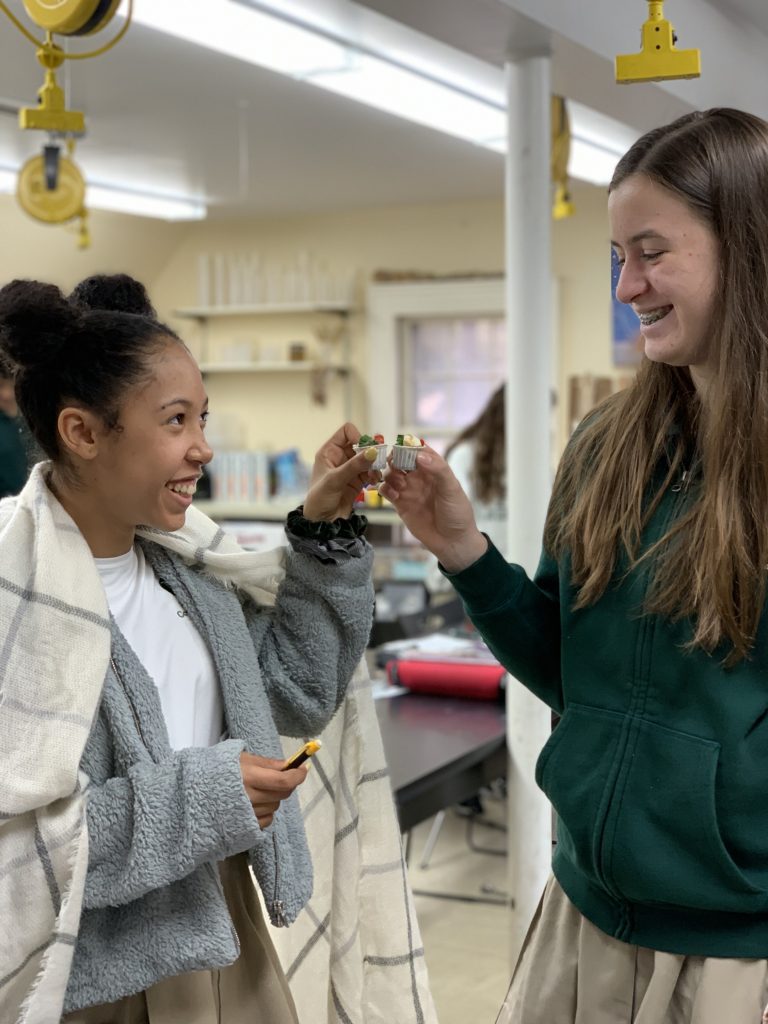
Mindful Eating
Grocery store scavenger hunt.
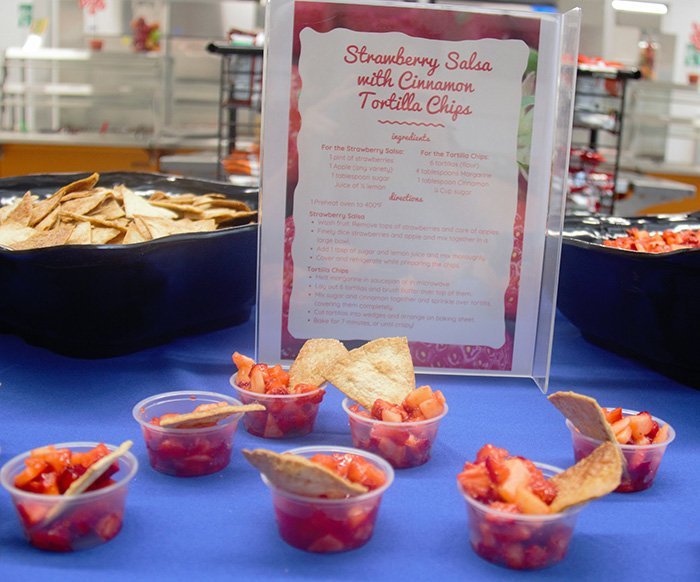
Private: Taste Tests With a Twist
Nutrition education.
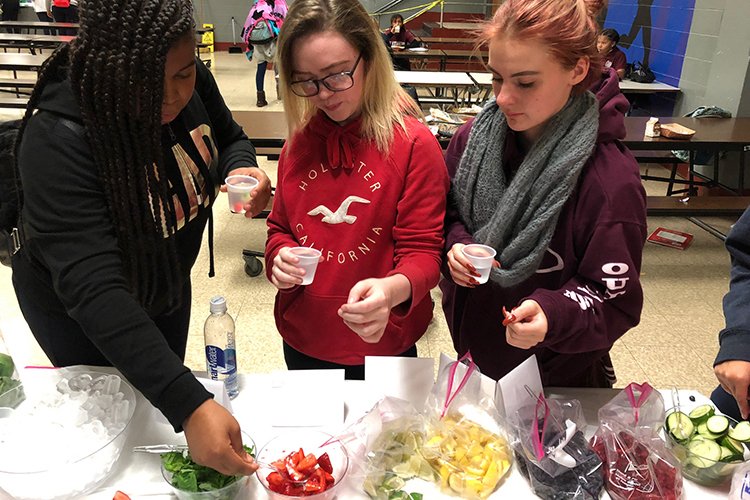
Fresh Fruit & Vegetable Taste Test Ideas
Whole grain taste test ideas, making the case for school wellness.
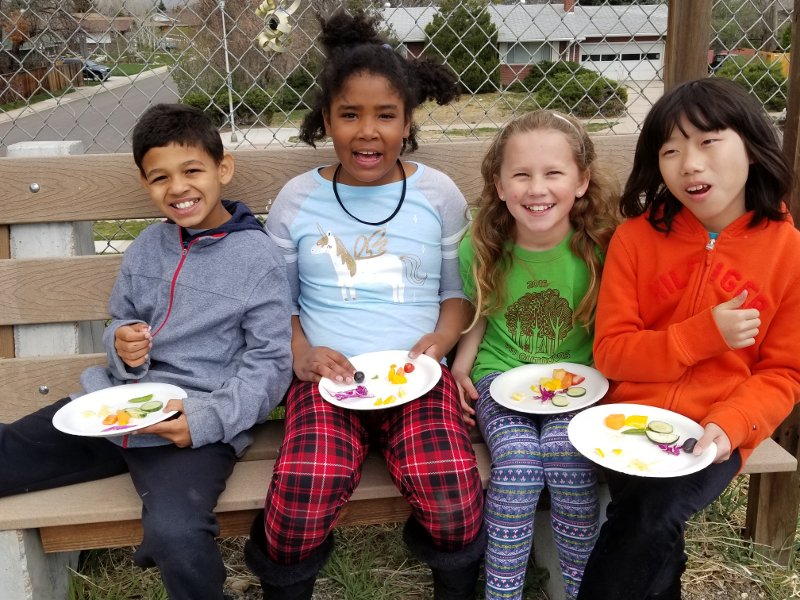
Anti-Bribing Strategies for Picky Eaters
Don’t leave without your list! Check out the health (and budget) benefits of shopping with a list .
Protein-Packed Breakfast Tacos
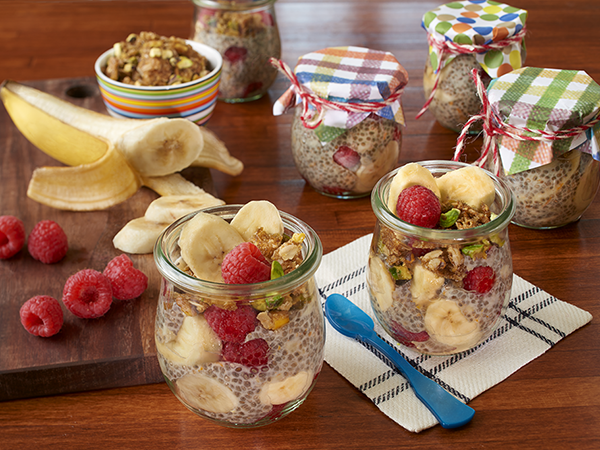
Banana Breakfast Pudding with Pistachio Crumble
Smart goals for health and wellness, going the distance: making meals last longer.
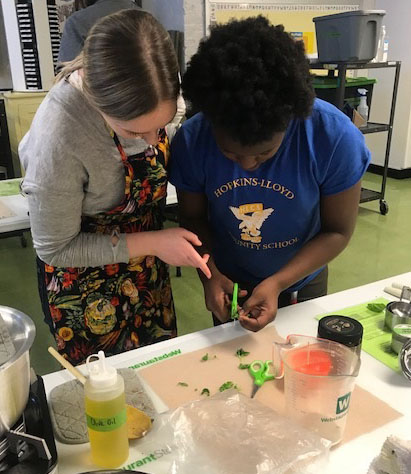
Easy Nutrition Education Activities
Science in the kitchen.
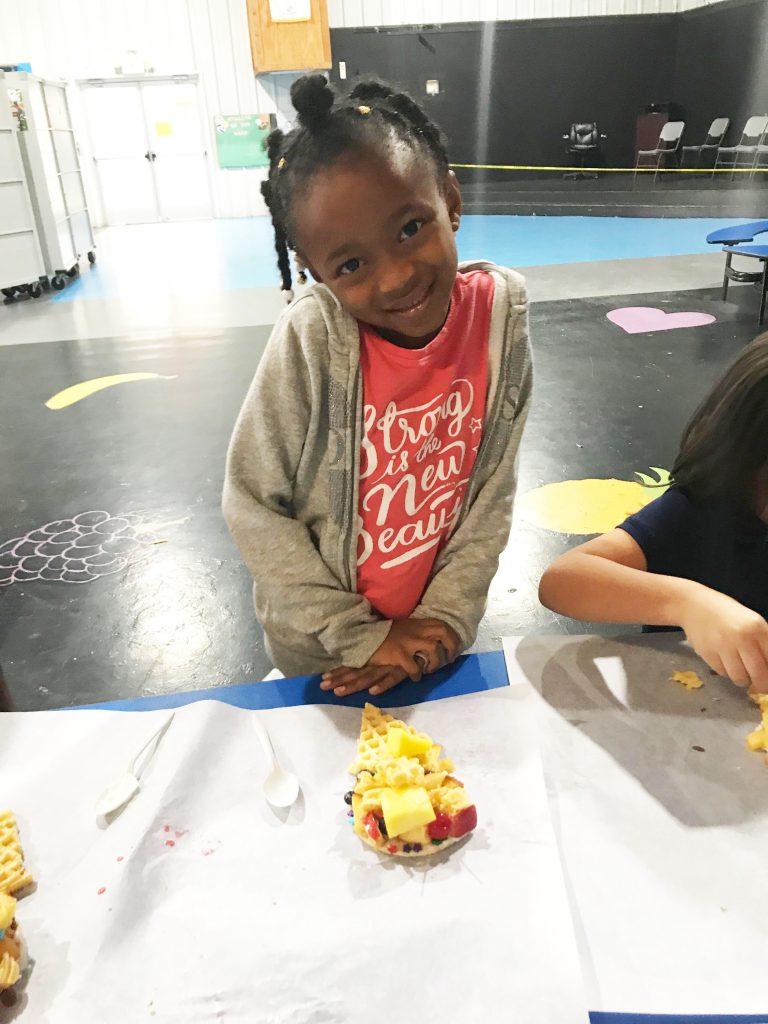
Make nutrition engaging for elementary students with the Dole guide “ Getting Healthy is Fun: Lesson Plans, Games, & Activities. “
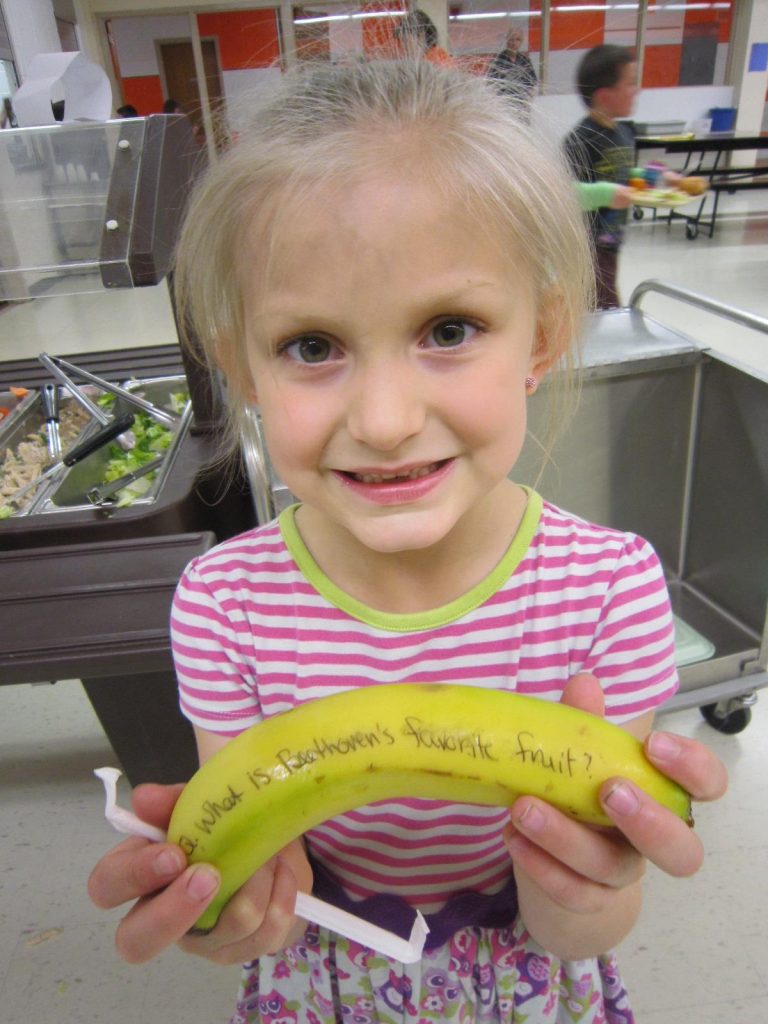
Write a playful joke or message of encouragement on a “bananagram” to make for a friendlier snack time.
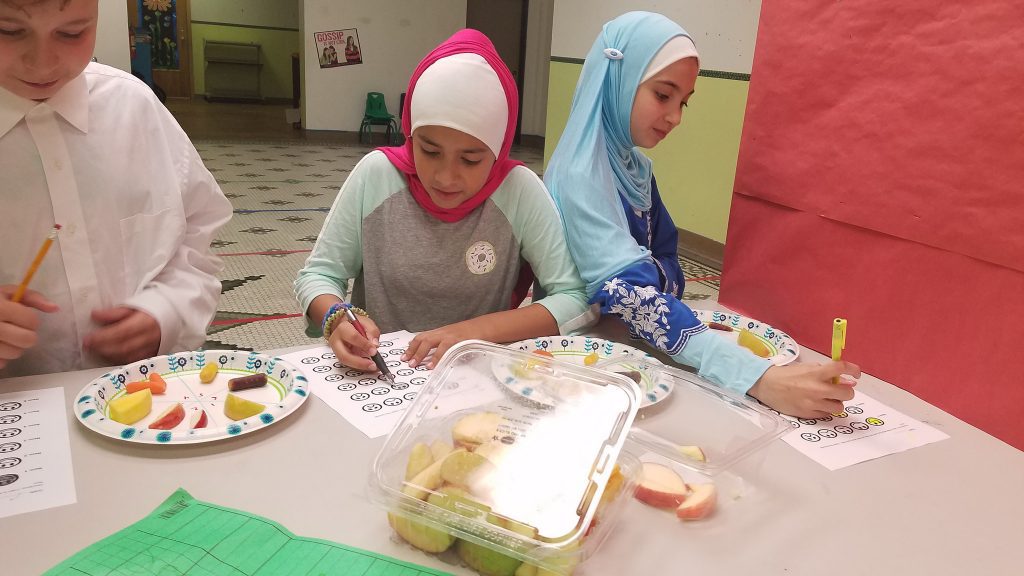
How to Host a Taste Test

Vending, Concessions, and Snacks at School Events
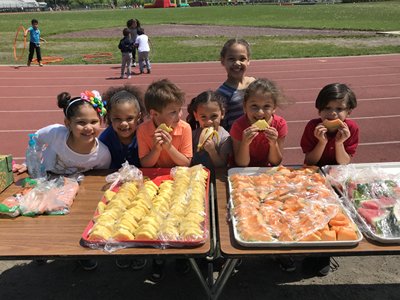
School Nutrition Action Plan Template
100 daily announcements, ways to incorporate nutrition into the school day.
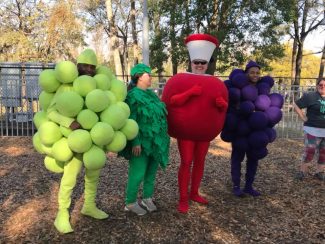
Nutrition Education & Activities for Staff
Apply for a school grant to introduce or improve nutrition programs at your school!
School Gardens: Here We Grow
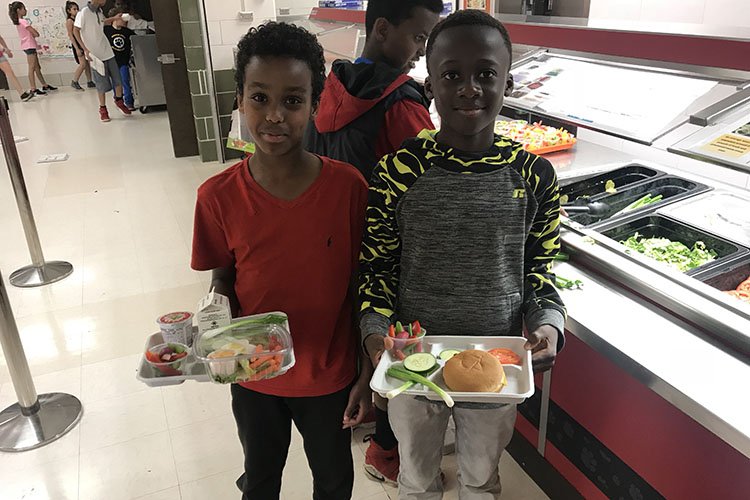
Staff as Healthy Role Models
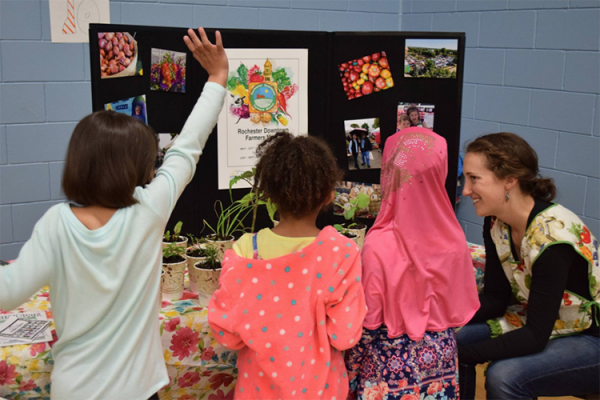
Five Ways to Incorporate Nutrition Into the Day
Tip sheet: healthy fundraising ideas, rethink your drink.

Staff Professional Development
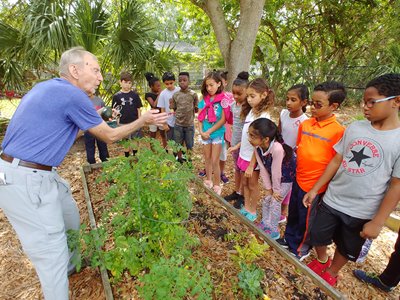
School Garden
Offer healthy snacks.
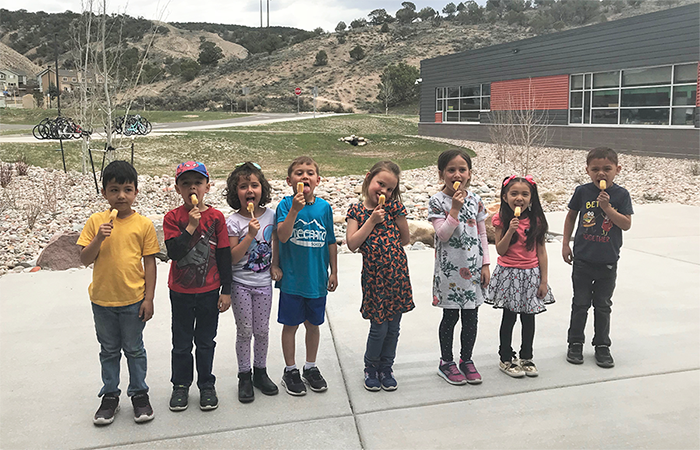
Tip Sheet: Healthy School Snacks
Healthy cooking club.
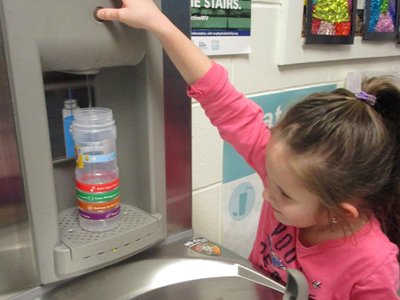
More Water, Please!
Nutrition promotion, private: april showers bring may veggies, carpenter's corner: building a school garden, carpenter's corner: building a school garden.
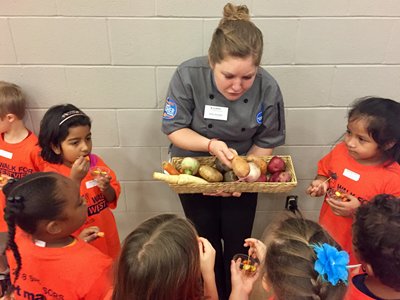
Tip Sheet: Nutrition Promotion
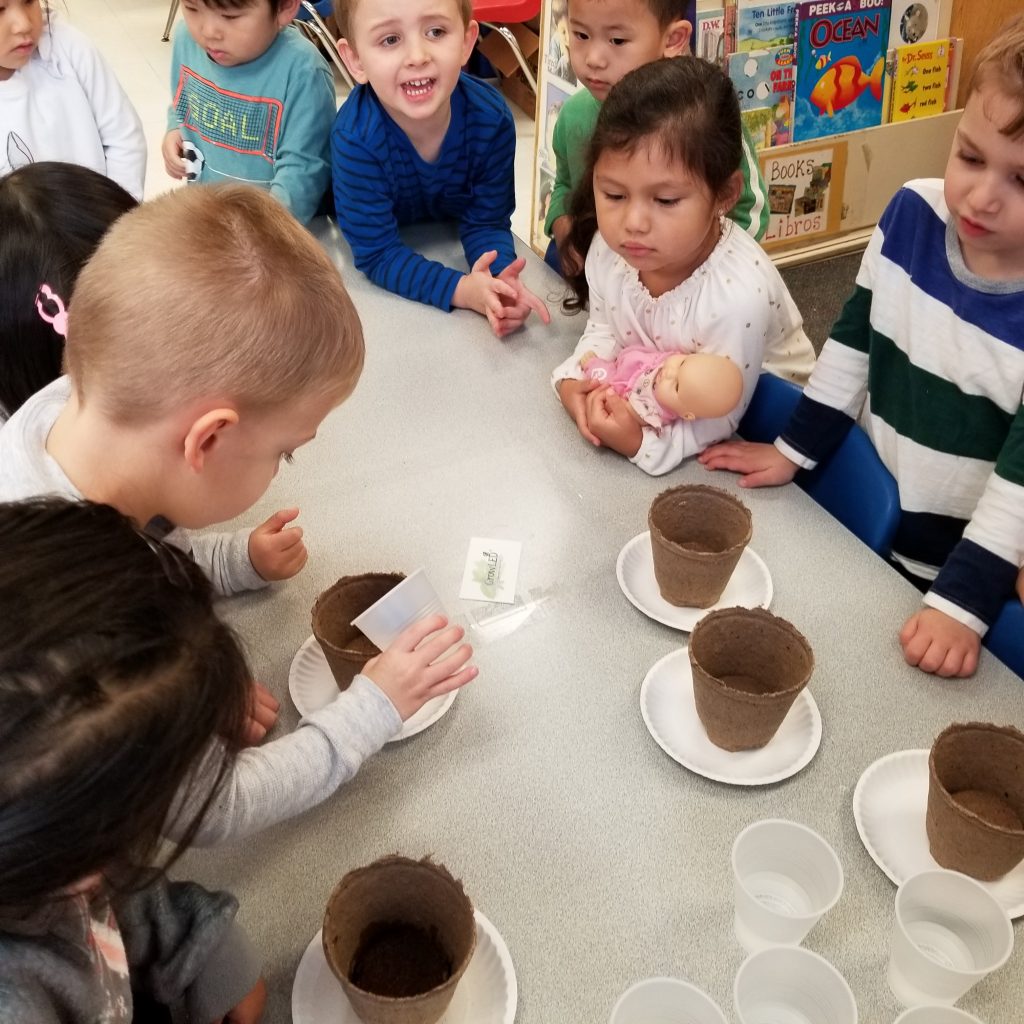
Private: Creative Gardens: Thinking Outside the Garden Box
Refine Your Search
Refine your keyword search to narrow your results.
Populations
Content types.
How We Help /
Nutrition Education
Improving adolescents’ nutrition knowledge.
Well-nourished adolescents are healthier and perform better at school. More education leads to better long-term health and improved nutrition. Adolescence is the time to establish a healthy diet.
Adolescent girls reached with gender-sensitive health & nutrition education
Adolescent boys reached with gender-sensitive health & nutrition education
Frontline workers trained to deliver adolescent health services and nutrition education
Adolescents can have a brighter future if proper nutrition and healthy habits are established in this critical growth period.
The world today is home to the largest population of adolescents and youth in human history. Almost half of 1.2 billion adolescents living on the planet are girls.
86% of the world’s adolescents live in low- and middle-income countries, with more than half of the adolescent population living in Asia.
Adolescents need adequate and healthy diets to meet the growth demands of puberty and to reduce the risk of malnutrition. Adolescence marks the second-fastest period of growth, after infancy, providing a second window of opportunity in the life course for growth and development.
With access to adequate health and nutrition, adolescence is a time when “catch-up growth” may occur and reduce childhood stunting, with dramatic increases in height.
Adolescents are a diverse group with varied needs and motivations
The global community needs a deeper understanding of the needs, preferences and circumstances of adolescents to deliver health and nutrition education that ensures health equity, non-discrimination and active participation.
To inform program development and policy-making, we need to understand the behaviours, dietary patterns and main influencers in the context of adolescents’ social and psychosocial development.
Also, to support scale-up, health systems integration, cross-sector collaboration and sustainability, we need to conduct follow-up research to help identify innovations, delivery platforms and partnerships that reach and affect adolescents.
How we help
We ensure that adolescents get the nutrition and knowledge they need to reach their full potential.
Through our nutrition education interventions, we:
- Support adolescents in becoming advocates for their own nutrition and health with knowledge and skill development by developing or revising existing school curricula to include topics such as growth, puberty and nutritional needs, menstrual hygiene management, and physical activity and overall health for boys and girls
- Promote a multisectoral approach to improving adolescent nutrition by collaborating and working with other sectors on topics that resonate with adolescents and respond to their needs, such as education, water, sanitation and hygiene, family planning and social protection
- Support a “girl-to-girl” approach to reach out-of-school adolescent girls, which includes training a core group of schoolgirls to be nodal girls, who are tasked with reaching out-of-school girls with a regular supply of iron and folic acid supplements and offering counselling on the benefits and managing side effects
- Train teachers and frontline health workers to reach women and adolescent girls with health and nutrition information
- Work with both ministries of health and education, as well as local partners to support the implementation of adolescent nutrition intervention packages
- Provide guidance to governments on the scale-up of the most cost-effective strategies within the education and health systems
Adolescent Nutrition and Anaemia free online course
Globally, adolescents―particularly girls―are greatly affected by malnutrition, partly due to their specific biological needs. However, they are often missed by health and nutrition interventions. This course is designed to close the knowledge gap.
Learn more about adolescent nutrition
Our Global Projects
Discover our projects around the world
See a list of Nutrition International projects that include nutrition education leading to better health and education potential.
Increase Gains in Nutrition by Integration, Education, Evaluation, Empowerment…
Working alongside our partners, this project will deliver integrated nutrition, health and WASH programming for those who need it most in Malawi, Ghana and Pakistan.

Realizing Gender Equality, Attitudinal Change and Transformative Systems in…
REACTS-IN contributes to achieving global nutrition targets by improving the health and nutrition of women, adolescent girls and children under five in Bangladesh, Kenya, Somalia and Tanzania.
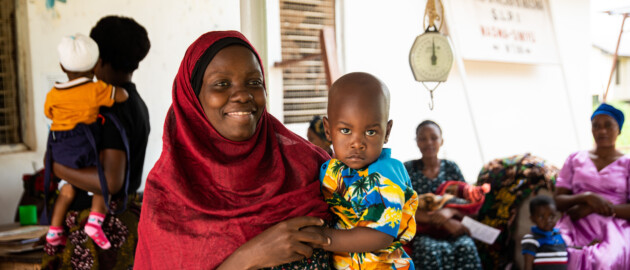
Food Fortification Program (FFP) Pakistan
Implementing a large-scale food fortification program in Pakistan to fortify wheat flour and edible oil with micronutrients in collaboration with Mott MacDonald.
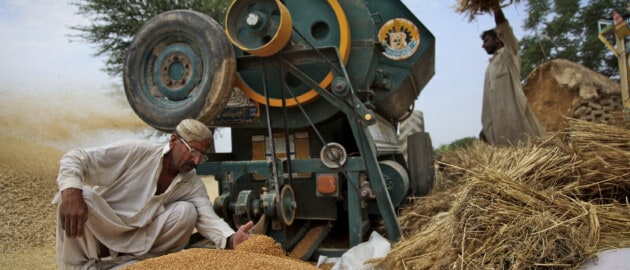
Enhancing Nutrition Services to Improve Maternal and Child Health (ENRICH)
ENRICH contributes to achieving global nutrition targets, reducing maternal and child mortality, and improving overall maternal and child health outcomes in Bangladesh, Kenya and Tanzania.

United Nations Population Fund, Nigeria
Working with UN Population Fund, we're increasing knowledge and awareness of iron-folic acid supplementation and healthy diet among adolescent girls, women of reproductive age, and healthcare workers.
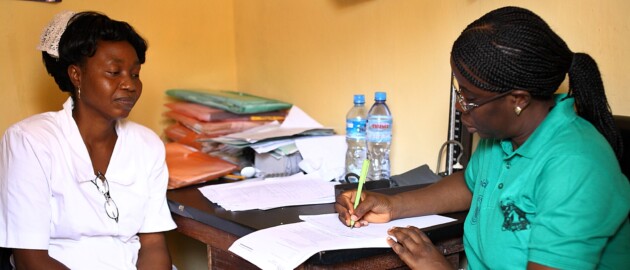
Adolescent Girls
Well-nourished girls are more likely to stay in school and succeed in their studies, giving them better job opportunities, increased lifetime earnings and greater agency.
Gender Equality
We apply a gender lens to all of our programs, projects and partnerships to ensure women and girls can be empowered advocates for their own health and nutrition.
Supplementation
We deliver the key micronutrients the body needs to survive and thrive through supplementation, a low-cost and simple solution that helps prevent the most common micronutrient deficiencies.
Sign up for the Nutrition International Newsletter

An official website of the United States government
Here's how you know
The .gov means it’s official. Federal government websites often end in .gov or .mil. Before sharing sensitive information, make sure you’re on a federal government site.
The site is secure. The https:// ensures that you are connecting to the official website and that any information you provide is encrypted and transmitted securely.
About Grants
The lifecycle of grants and cooperative agreements consists of four phases: Pre-Award, Award, Post-Award, and Close Out.
Access to Data
The National Institute of Food and Agriculture is committed to serving its stakeholders, Congress, and the public by using new technologies to advance greater openness.
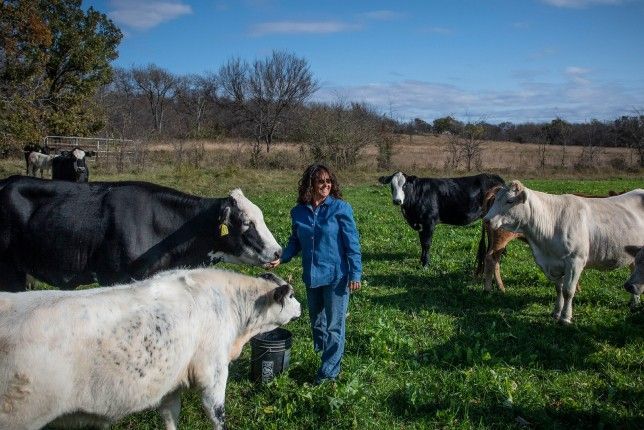
Access Data Gateway
The Data Gateway enables users to find funding data, metrics, and information about research, education, and extension projects that have received grant awards from NIFA.
View Resources Page
This website houses a large volume of supporting materials. In this section, you can search the wide range of documents, videos, and other resources.


Featured Webinar
Second annual virtual grants support technical assistance workshop.
Check out this five-day workshop in March 2024 workshop, designed to help you learn about NIFA grants and resources for grants development and management.
The National Institute of Food and Agriculture provides leadership and funding for programs that advance agriculture-related sciences.

Nutrition Programs
A healthy, nourished population depends on strong research and education programs in human nutrition. NIFA partners with the Cooperative Extension System to deliver community-based nutrition education programs that help individuals, families, and communities make informed choices about food and lifestyles that support their physiological health, economic, and social well-being.
The programs also provide policymakers with the knowledge to make appropriate policies for our citizens. NIFA sponsors nutrition-related research conducted through multistate projects and projects funded through the Hatch Act and the Agriculture and Food Research Initiative. In cooperation with our land-grant partners, NIFA provides practical, science-based education to the general public about affordable and accessible food, food resource management, food recovery and food rescue, gleaning and food donations. We also train staff and volunteers at emergency food assistance sites and other locations. We provide public issues education by:
- Facilitating open forums to discuss hunger and poverty at the community level.
- Encouraging and facilitating citizen and consumer participation in public policy issues affecting food access and recovery.
The principles found in the Dietary Guidelines for Americans and the Physical Activity Guidelines for Americans are used to develop non-formal nutrition education services for youth and adults. There are also programs for the elderly that focus on their specific nutritional needs. Our land-grant partners offer these community-based nutrition education programs at the local level. Participants learn about the guidelines and about ChooseMyPlate.gov , which provide the basis for healthy lifestyle choices, and on how to read labels on processed foods. Participants also learn about health risk factors such as obesity and hypertension, and learn to make appropriate nutrition and lifestyle changes.
Examples of NIFA Nutrition Programs include:
- Community Food Projects Competitive Grant Program (CFPCGP)
- The Expanded Food and Nutrition Education Program (EFNEP)
- Regional Nutrition Education and Obesity Prevention Centers of Excellence (RNECE)
- Agriculture and Food Research Initiative (AFRI) Foundational Program
- 2019 FASLP webinar
- Request the FASLP Webinar May 2019 Slide Deck
Related programs include: The Supplemental Nutrition Education Program - Education (SNAP-Ed) , Obesity Prevention & Healthy Weight Programs , Hunger & Food Security Programs , and Child and Family Development
Your feedback is important to us.

Games + Activities
Explore nutrition education games that support the formation of healthy eating habits.
Nutrition Education Games & Activities
Promote healthy eating for children and families for grades Kindergarten to High School.
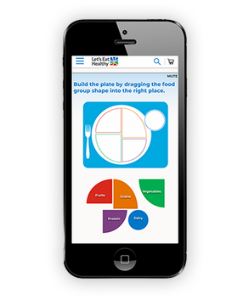
Let's Eat Together Nutrition Education Broadcast Series
Join the journey of food discovery through nutrition, agriculture, cooking, culture and the senses!
Join the Let's Eat Healthy Initiative!
Sign up to show your commitment for ensuring children + families are supported to grow healthfully.
New Nutrition Advocate?
Register a new account on HealthyEating.org to order nutrition resources, get the latest nutrition science or support healthy eating in your community.
Create account
Thanks for creating an account. Please login.
Forgot Password

Official websites use .gov A .gov website belongs to an official government organization in the United States.
Secure .gov websites use HTTPS A lock ( ) or https:// means you've safely connected to the .gov website. Share sensitive information only on official, secure websites.
- Nutrition by Life Stage
For Tweens and Teens
Find information and games that teach tweens and teens about the importance of nutrition and physical activity.
Build healthy eating habits in your teenage years using these tips.
Download the free Dining Decisions game to your iPad, iPhone, or Android device and see how healthy you can make your food plate!
These materials challenge kids (ages 9 to 13) to look for and use the Nutrition Facts label on food and beverage packages. Materials include fun, easy tips and targeted education to help make label reading a key component through which today’s young people are equipped to achieve a healthy diet.
Learn about whole grains in this educational handout and quiz.
Learn about health and nutrition as you get older and start making your own decisions about food choices and physical activity.
Find links to resources, tools, and research on teen health.
Learn about what nutrients are, healthy weight goals, what to do if you are a vegetarian, and more.
Find nutrition tips to help teen athletes fuel before, during, and after workouts to optimize performance.
- Skip to main content
- Skip to FDA Search
- Skip to in this section menu
- Skip to footer links

The .gov means it’s official. Federal government websites often end in .gov or .mil. Before sharing sensitive information, make sure you're on a federal government site.
The site is secure. The https:// ensures that you are connecting to the official website and that any information you provide is encrypted and transmitted securely.
U.S. Food and Drug Administration
- Search
- Menu
- Food Labeling & Nutrition
Nutrition Education Resources & Materials
Resources on the importance of good nutrition.
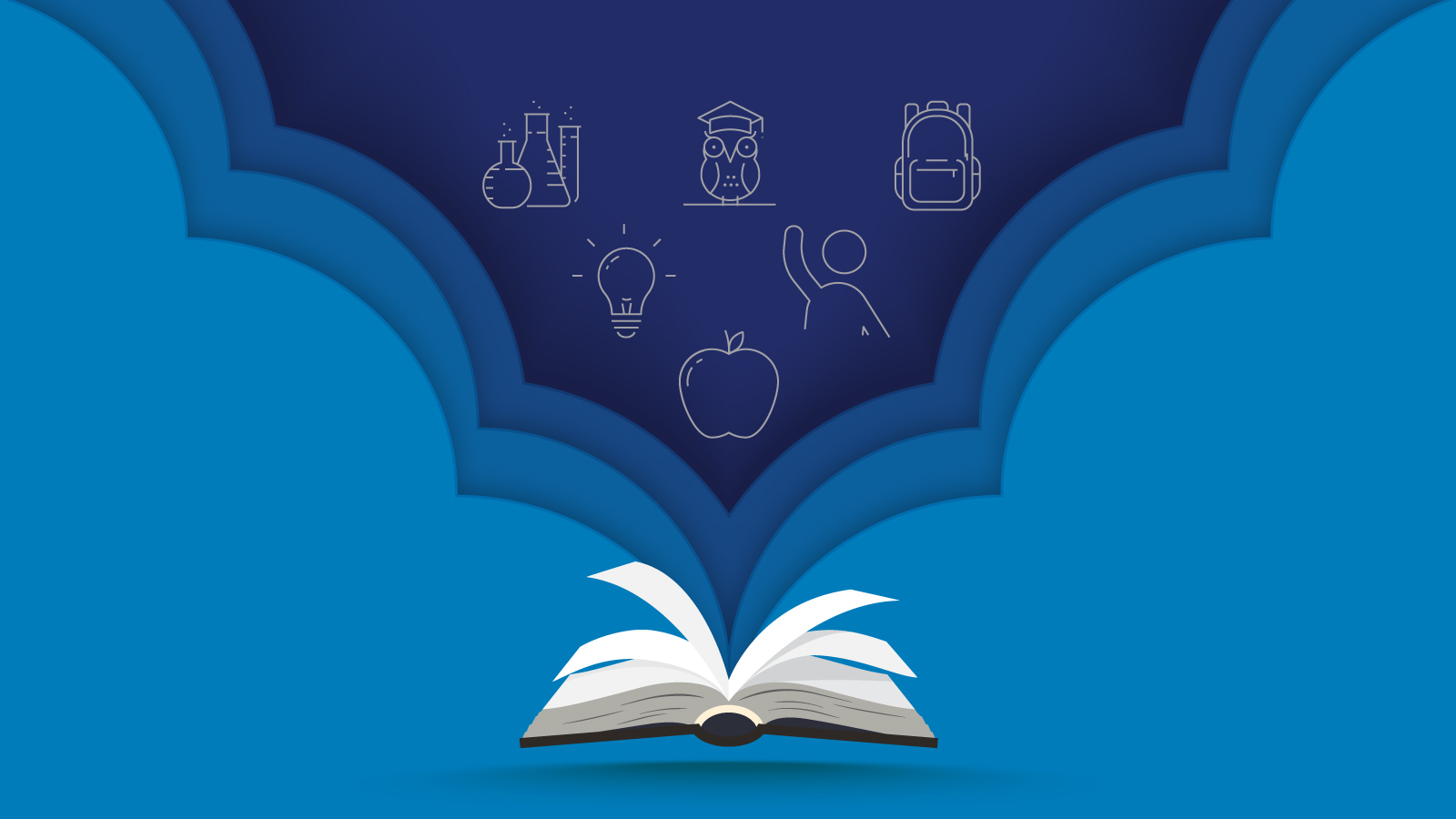
The Nutrition Facts Label
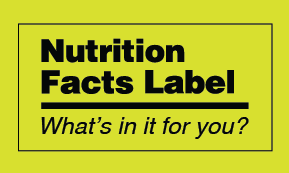
The Nutrition Facts label reflects current scientific information, including the link between diet and chronic diseases such as obesity and heart disease. The label makes it easier for you and your audience to make more informed food choices.
Learn about What’s on the Nutrition Facts Label , including details on: Calories, Serving Sizes, Added Sugars, and Percent Daily Value.
Industry members, read more about the changes to the Nutrition Facts label requirements .
More on the Nutrition Facts Label
How to Understand and Use the Nutrition Facts Label Learn how to use this information more effectively and easily.

Interactive Nutrition Facts Label An interactive way to learn about the Nutrition Facts label and discover the wealth of information it contains.
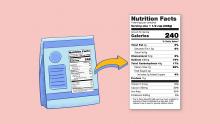
For Educators
Health Educator’s Nutrition Toolkit Teach your audience how to use the Nutrition Facts label and to make informed choices.

"Behind the Label” with FDA Information for Educators View this video for health educators that explains the changes to the Nutrition Facts label.
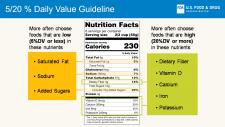
For Youth & Youth Educators
Read the Label Use these hands-on materials to challenge kids and families to look for and use the Nutrition Facts label.
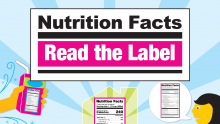
Science and Our Food Supply | Curriculum for Middle/High School Teachers Introduce students to the fundamentals of informed food choices with this nutrition-based curriculum.
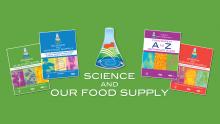
Whyville Snack Shack Games Kids can play two fun games that test their knowledge about using the Nutrition Facts label to make healthy snack choices.

For Older Adults
A How-To Guide for Older Adults Good nutrition can help older adults feel their best and stay strong. It can also help lower the risk of developing some health conditions that are common among older adults.

For Physicians & Healthcare Professionals
Physicians' Continuing Medical Education Program Resources for talking to patients about using the Nutrition Facts label to make healthy food choices.

Pediatricians' Continuing Medical Education Program Resources for talking to parents and patients about using the Nutrition Facts label to make healthy food choices.

More on Labeling
Gluten-Free Labeling Learn how gluten-free labeling can help your audience manage health and dietary intake — especially those with celiac disease.

Calories on the Menu | Menu Labeling Information Find out how calorie labeling on menus can help your community make informed and healthful decisions about meals and snacks.

Sodium | Look at the Label Learn the basics on sodium’s health effects, how-to’s for using the Nutrition Facts label to reduce sodium intake, and more.

Using the Nutrition Facts Label to Choose Milk and Plant-Based Beverages Use the Nutrition Facts Label to compare the nutrient content of different products to help you make the best choices for you and your family when choosing milk and plant-based beverages.

CFSAN Education Resource Library
FDA's Center for Food Safety and Applied Nutrition (CFSAN) has a wealth of nutrition education materials.
Consumers, educators, teachers, dietitians, and health professionals are invited to explore CFSAN’s Education Resource Library – a catalog of downloadable and printable materials and videos on nutrition (including labeling and dietary supplements), food safety, and cosmetics.

Education Newsletter
Get regular FDA email updates delivered on this topic to your inbox.

WIC is changing in 2024. Here's what to expect
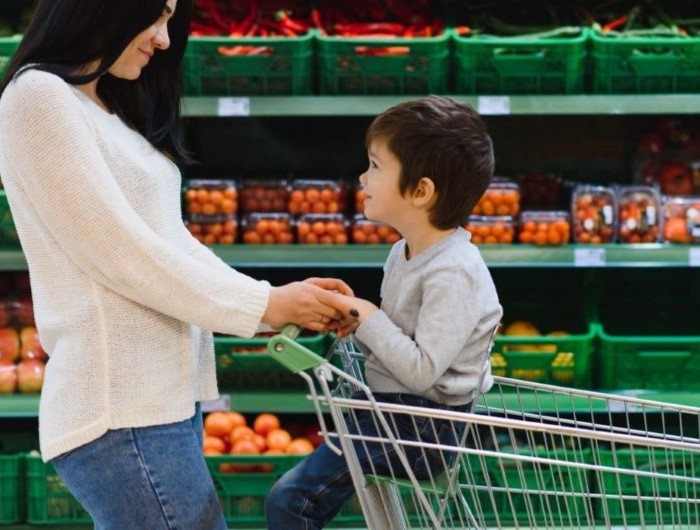
Serhii - stock.adobe.com
WIC provides nutritious foods, nutrition education, and health care referrals to more than 6 million women, infants, and children who are at nutritional risk. The program’s latest revisions will strengthen WIC food packages to better align with the science-based recommendations of the latest Dietary Guidelines for Americans and the National Academies of Sciences, Engineering, and Medicine.
What is WIC?
The Special Supplemental Nutrition Program for Women, Infants, and Children (WIC) is a federal nutrition program that currently provides food, nutrition education, and healthcare referrals for millions of families in the US.
WIC is one of the most effective programs for improving access to nutritious foods with over 6 million women, infants, and children participating in the program.
“WIC has a half-century track record of caring for young families. USDA and the Biden-Harris Administration are committed to ensuring that moms, babies, and young children continue to thrive through WIC,” said Secretary of Agriculture Tom Vilsack in a press release.
How is WIC changing?
On April 9, 2024, the USDA finalized a rule that will update and strengthen WIC food packages to better align with the latest science-based recommendations of both the 2020-2025 Dietary Guidelines for Americans and the National Academies of Sciences, Engineering, and Medicine.
More fruits and vegetables
WIC participants will see a permanent increase in the overall benefits value that will allow more purchases of fruits and vegetables, and an expanded variety available for purchase. The revisions will make permanent the widely praised $15-$36 increase in fruits and vegetables allowance (depending on package type) that have been temporarily available to participants since October 2021.
Higher fruit and vegetable issuance to WIC participants is critical for improving health outcomes and closing nutrition gaps. Nationwide, nearly 90 percent of toddlers consume less than the recommended intake of vegetables, and about 40 percent consume less than the recommended intake of fruit. Pregnant and lactating people, on average, consume less than the recommended intake of total fruits and vegetables. When analyzing WIC-eligible populations, NASEM found that 100 percent of postpartum women, 99 percent of children, and 99 percent of pregnant women fall short of DGA-recommended vegetable intake.
More whole grains
Now, 75 percent of approved cereals will list a whole grain as the first ingredient; for reference, the DGA recommends that at least half of the grains consumed in a day are whole grains . Participants will soon be able to choose from a wider variety of grains, including quinoa, wild rice, millet, triticale, amaranth, kamut, sorghum, wheat berries, tortillas with folic acid-fortified corn masa flour, corn meal (including blue), teff, buckwheat, and whole wheat pita, English muffins, bagels, and naan, allowing for culturally relevant choices and increased options for those with food sensitivities (like wheat allergy or celiac disease) that were not previously available.
Introducing whole grains during childhood is critical as whole grain consumption boosts intake of priority nutrients like fiber and iron and is associated with reduced risk of cardiovascular disease, type 2 diabetes, and other chronic diseases.
Changes to dairy options
The new USDA rule allows only unflavored milk, and will, for the first time, set added sugars limits for yogurt and soy beverages. Participants will also have access to lactose-free options, and the new revision will allow flexibility on package sizes and non-dairy substitution options (like plant-based yogurt and cheese).
Wider variety of proteins
Canned fish will now be included in some WIC packages without a reduction in other proteins, like legumes or peanut butter.
Seafood is an important source of protein and other nutrients like iron, choline, omega-3 fatty acids, calcium, and vitamin D that are a priority for the WIC population. The 2020 DGAs emphasized the benefits of seafood consumption for pregnant and breastfeeding women, noting the potential benefits to a child’s cognitive development. Women who are pregnant generally eat less than the recommended amount of seafood , while lactating women are generally in the lower range of recommendations. The USDA’s new rule will greatly expand access to seafood.
Flexibility for cultural or dietary preferences
Canned beans will also be made available to WIC participants, who were previously offered only dried beans and legumes. Beans, lentils, chickpeas, and other pulses are high in protein, fiber, minerals, and vitamins and low in fat. Eating beans and lentils as part of a healthy diet can help prevent chronic diseases , and expanded options make more plant-based proteins available to meet participants’ cultural or dietary preferences.
This will help millions of women, infants, and children participating in the program get the nutrition they need while maintaining participant choice honoring cultural food preferences, and helping address barriers like limited cooking facilities, storage, and transportation.
CSPI supports healthy kids and nutrition security
The Center for Science in the Public Interest is a leading voice in healthy kids’ policies and programs, including healthier school foods , expanded healthy meal access , improvements to SNAP and WIC , safety reforms for infant formula and children’s foods, better restaurant meals for children , better enforcement of laws about marketing food products to children , and expanded fresh food options at common retailers like Dollar General .
“Unlike other nutrition programs, WIC has a very specific charge to supplement the diets of women, infants, and children who are at nutritional risk. These changes to the food packages will make it easier for moms to get the nutrition they need and build healthy habits for life for their babies and children participating in WIC. We applaud the USDA today for doing right by moms and kids,” says CSPI Campaign Manager of Federal Child Nutrition Programs Meghan Maroney.
How you can help
“Nutrition security,” or access to nutritious foods, does not yet have a standardized definition or measurement. Developing a way to track nutrition security and report on access to nutritious food in the Supplemental Nutrition Assistance Program (SNAP) can strengthen support for programs that provide fruit and vegetable incentives to people who shop with SNAP benefits and help us understand how to improve health and food access for people participating in the program.
Support our effort to define and improve nutrition security:
Tell Congress to support nutrition for people with low incomes
- Healthy Kids
- Healthy Eating

Stirring the Pot
Join the fight for safer, healthier food
Sign up to receive action alerts and opportunities to support our work in Stirring the Pot, our monthly newsletter roundup.
Food is Medicine: A Project to Unify and Advance Collective Action

The White House Conference on Hunger, Nutrition, and Health — held in September 2022 — renewed national attention and issued a call to action to end hunger and reduce the prevalence of chronic disease in the United States by 2030.
Food is Medicine approaches that focus on integrating consistent access to diet- and nutrition- related resources are a critical component to achieve this goal. The approaches are increasingly present across many communities and systems. There’s also increasing federal investment and action to support Food is Medicine approaches in a variety of settings.
Building on this collective energy, the Department of Health and Human Services (HHS) developed a Food is Medicine initiative in response to a congressionally funded initiative in fiscal year 2023. This congressional action directed the Secretary of HHS, in consultation with other federal agencies, to develop and implement a federal strategy to reduce nutrition-related chronic diseases and food insecurity to improve health and racial equity in the United States. This includes diet-related research and programmatic efforts that will increase access to Food is Medicine initiatives.
Learn about Food is Medicine framing language and principles.
Understanding the Connection Between Food and Health
Access to nutritious food is critical to health and resilience. Food is Medicine is a concept that reaffirms this connection, recognizing that access to high-quality nourishment is essential for well-being. By supporting the production of and facilitating access to nutritious food across a health continuum and range of settings, approaches to Food is Medicine support immediate and long-term resources for people, communities, and systems.
Nutrition Security and Health: By the Numbers
- Approximately 33.8 million people live in food-insecure households. 1
- Household food insecurity affected 12.5 percent of households with children in 2021. 1
- About half of all American adults — or 117 million individuals — have 1 or more preventable chronic disease, many of which are related to poor-quality eating patterns and physical inactivity. These include cardiovascular disease, high blood pressure, type 2 diabetes, some cancers, and poor bone health. 2
- Lower food security is associated with higher probability of chronic disease diagnosis — including hypertension, coronary heart disease, hepatitis, stroke, cancer, asthma, diabetes, arthritis, COPD (chronic obstructive pulmonary disease), and kidney disease. 3
- Nearly $173 billion a year is spent on health care for obesity alone. 4
HHS Approach
HHS will work collaboratively with federal partners and external organizations and communities to develop resources that can be used to advance Food is Medicine approaches across the country.
Our plans include the following steps:
1. Listen to Communities and Implementation Partners
- HHS will engage with a variety of external partners across the nation to better understand challenges and opportunities to advance Food is Medicine models.
- HHS will conduct an environmental scan of existing Food is Medicine models, initiatives, and federal, state, and local regulations and policies.
2. Cultivate Partnerships with Cross-Sector Leaders
- HHS and federal colleagues will build a public-private learning collaborative to support collectively measuring and demonstrating data-driven insights.
3. Develop Resources to Support Broad Uptake
- HHS will develop an evidence-based implementation resource that can serve as a practical guide to help communities understand how to design and implement effective Food is Medicine pilots and policy-sustaining programs.
- HHS will create a unified, applied-measures registry to support and create a transparent catalog of high-value, reliable measures.
- HHS will facilitate knowledge exchange and continue to identify opportunities for federal action to advance a robust Food is Medicine landscape.
Please note that this webpage will be updated with tools and resources as the initiative progresses.
Examples of Current HHS Food is Medicine Activities and Practice Resources
- Innovations in Medicaid programs: Section 1115 of the Social Security Act gives the Secretary of Health and Human Services authority to approve experimental, pilot, or demonstration projects, offering states an avenue to test new approaches in Medicaid that differ from what is required by federal statute. The Biden-Harris Administration has encouraged states to propose innovative Section 1115 waivers that expand coverage, reduce health disparities, and/or advance whole-person care (including addressing health-related social needs). HHS recently approved groundbreaking Medicaid initiatives in Massachusetts and Oregon and Arkansas that gave the states new authority to test coverage for evidence-based nutritional assistance and medically tailored meals.
- Indian Health Service (IHS) Produce Prescription Pilot Program: American Indian and Alaska Native (AI/AN) people are disproportionately impacted by food insecurity when compared to non-Native people. They’re also more likely to live in areas with low or no access to fresh foods than any other racial or ethnic group. Produce prescription programs have been shown to increase access to nutritious foods in communities at risk for food insecurity. In 2023, IHS awarded a total of $2.5 million in funding to help decrease food insecurity in Native communities. Of that funding, 5 tribes and tribal organizations received $500,000 each in 2023 to implement a produce prescription program in their communities.
- Stimulating Research: In June 2022, the National Institutes of Health (NIH) released a Notice of Special Interest (NOSI): Stimulating Research to Understand and Address Hunger, Food and Nutrition Insecurity to encourage research on the efficacy of interventions that address nutrition security and the mechanisms of food insecurity on a variety of health outcomes. In April 2023, as part of a government-wide collaboration that includes 12 federal agencies and offices, NIH released a Request for Information on Food is Medicine Research Opportunities to gather input on the following topic areas: 1) Research, 2) Community Outreach and Engagement, 3) Education and Training, 4) Provision of Food is Medicine Services and Activities, and 5) Coverage for Services.
- Supporting Best Practices: The Administration for Community Living developed a public-facing resource with information to support partners’ design and implementation of Food is Medicine approaches, such as medically tailored meals, for older adults.
1 https://www.ers.usda.gov/topics/food-nutrition-assistance/food-security-in-the-u-s/key-statistics-graphics
2 https://www.usda.gov/media/blog/2016/03/16/healthy-eating-index-how-america-doing#:~:text=About%20half%20of%20all%20American,cancers%2C%20and%20poor%20bone%20health
3 https://www.ers.usda.gov/webdocs/publications/84467/err-235.pdf?v=9081.9
4 https://www.cdc.gov/chronicdisease/resources/publications/factsheets/nutrition.htm
The Office of Disease Prevention and Health Promotion (ODPHP) cannot attest to the accuracy of a non-federal website.
Linking to a non-federal website does not constitute an endorsement by ODPHP or any of its employees of the sponsors or the information and products presented on the website.
You will be subject to the destination website's privacy policy when you follow the link.
An official website of the United States government
Here’s how you know
Official websites use .gov A .gov website belongs to an official government organization in the United States.
Secure .gov websites use HTTPS A lock ( Lock Locked padlock icon ) or https:// means you’ve safely connected to the .gov website. Share sensitive information only on official, secure websites.
- Entire Site
- Research & Funding
- Health Information
- About NIDDK
- Diabetes Overview
Healthy Living with Diabetes
- Español
On this page:
How can I plan what to eat or drink when I have diabetes?
How can physical activity help manage my diabetes, what can i do to reach or maintain a healthy weight, should i quit smoking, how can i take care of my mental health, clinical trials for healthy living with diabetes.
Healthy living is a way to manage diabetes . To have a healthy lifestyle, take steps now to plan healthy meals and snacks, do physical activities, get enough sleep, and quit smoking or using tobacco products.
Healthy living may help keep your body’s blood pressure , cholesterol , and blood glucose level, also called blood sugar level, in the range your primary health care professional recommends. Your primary health care professional may be a doctor, a physician assistant, or a nurse practitioner. Healthy living may also help prevent or delay health problems from diabetes that can affect your heart, kidneys, eyes, brain, and other parts of your body.
Making lifestyle changes can be hard, but starting with small changes and building from there may benefit your health. You may want to get help from family, loved ones, friends, and other trusted people in your community. You can also get information from your health care professionals.
What you choose to eat, how much you eat, and when you eat are parts of a meal plan. Having healthy foods and drinks can help keep your blood glucose, blood pressure, and cholesterol levels in the ranges your health care professional recommends. If you have overweight or obesity, a healthy meal plan—along with regular physical activity, getting enough sleep, and other healthy behaviors—may help you reach and maintain a healthy weight. In some cases, health care professionals may also recommend diabetes medicines that may help you lose weight, or weight-loss surgery, also called metabolic and bariatric surgery.
Choose healthy foods and drinks
There is no right or wrong way to choose healthy foods and drinks that may help manage your diabetes. Healthy meal plans for people who have diabetes may include
- dairy or plant-based dairy products
- nonstarchy vegetables
- protein foods
- whole grains
Try to choose foods that include nutrients such as vitamins, calcium , fiber , and healthy fats . Also try to choose drinks with little or no added sugar , such as tap or bottled water, low-fat or non-fat milk, and unsweetened tea, coffee, or sparkling water.
Try to plan meals and snacks that have fewer
- foods high in saturated fat
- foods high in sodium, a mineral found in salt
- sugary foods , such as cookies and cakes, and sweet drinks, such as soda, juice, flavored coffee, and sports drinks
Your body turns carbohydrates , or carbs, from food into glucose, which can raise your blood glucose level. Some fruits, beans, and starchy vegetables—such as potatoes and corn—have more carbs than other foods. Keep carbs in mind when planning your meals.
You should also limit how much alcohol you drink. If you take insulin or certain diabetes medicines , drinking alcohol can make your blood glucose level drop too low, which is called hypoglycemia . If you do drink alcohol, be sure to eat food when you drink and remember to check your blood glucose level after drinking. Talk with your health care team about your alcohol-drinking habits.

Find the best times to eat or drink
Talk with your health care professional or health care team about when you should eat or drink. The best time to have meals and snacks may depend on
- what medicines you take for diabetes
- what your level of physical activity or your work schedule is
- whether you have other health conditions or diseases
Ask your health care team if you should eat before, during, or after physical activity. Some diabetes medicines, such as sulfonylureas or insulin, may make your blood glucose level drop too low during exercise or if you skip or delay a meal.
Plan how much to eat or drink
You may worry that having diabetes means giving up foods and drinks you enjoy. The good news is you can still have your favorite foods and drinks, but you might need to have them in smaller portions or enjoy them less often.
For people who have diabetes, carb counting and the plate method are two common ways to plan how much to eat or drink. Talk with your health care professional or health care team to find a method that works for you.
Carb counting
Carbohydrate counting , or carb counting, means planning and keeping track of the amount of carbs you eat and drink in each meal or snack. Not all people with diabetes need to count carbs. However, if you take insulin, counting carbs can help you know how much insulin to take.
Plate method
The plate method helps you control portion sizes without counting and measuring. This method divides a 9-inch plate into the following three sections to help you choose the types and amounts of foods to eat for each meal.
- Nonstarchy vegetables—such as leafy greens, peppers, carrots, or green beans—should make up half of your plate.
- Carb foods that are high in fiber—such as brown rice, whole grains, beans, or fruits—should make up one-quarter of your plate.
- Protein foods—such as lean meats, fish, dairy, or tofu or other soy products—should make up one quarter of your plate.
If you are not taking insulin, you may not need to count carbs when using the plate method.

Work with your health care team to create a meal plan that works for you. You may want to have a diabetes educator or a registered dietitian on your team. A registered dietitian can provide medical nutrition therapy , which includes counseling to help you create and follow a meal plan. Your health care team may be able to recommend other resources, such as a healthy lifestyle coach, to help you with making changes. Ask your health care team or your insurance company if your benefits include medical nutrition therapy or other diabetes care resources.
Talk with your health care professional before taking dietary supplements
There is no clear proof that specific foods, herbs, spices, or dietary supplements —such as vitamins or minerals—can help manage diabetes. Your health care professional may ask you to take vitamins or minerals if you can’t get enough from foods. Talk with your health care professional before you take any supplements, because some may cause side effects or affect how well your diabetes medicines work.
Research shows that regular physical activity helps people manage their diabetes and stay healthy. Benefits of physical activity may include
- lower blood glucose, blood pressure, and cholesterol levels
- better heart health
- healthier weight
- better mood and sleep
- better balance and memory
Talk with your health care professional before starting a new physical activity or changing how much physical activity you do. They may suggest types of activities based on your ability, schedule, meal plan, interests, and diabetes medicines. Your health care professional may also tell you the best times of day to be active or what to do if your blood glucose level goes out of the range recommended for you.

Do different types of physical activity
People with diabetes can be active, even if they take insulin or use technology such as insulin pumps .
Try to do different kinds of activities . While being more active may have more health benefits, any physical activity is better than none. Start slowly with activities you enjoy. You may be able to change your level of effort and try other activities over time. Having a friend or family member join you may help you stick to your routine.
The physical activities you do may need to be different if you are age 65 or older , are pregnant , or have a disability or health condition . Physical activities may also need to be different for children and teens . Ask your health care professional or health care team about activities that are safe for you.
Aerobic activities
Aerobic activities make you breathe harder and make your heart beat faster. You can try walking, dancing, wheelchair rolling, or swimming. Most adults should try to get at least 150 minutes of moderate-intensity physical activity each week. Aim to do 30 minutes a day on most days of the week. You don’t have to do all 30 minutes at one time. You can break up physical activity into small amounts during your day and still get the benefit. 1
Strength training or resistance training
Strength training or resistance training may make your muscles and bones stronger. You can try lifting weights or doing other exercises such as wall pushups or arm raises. Try to do this kind of training two times a week. 1
Balance and stretching activities
Balance and stretching activities may help you move better and have stronger muscles and bones. You may want to try standing on one leg or stretching your legs when sitting on the floor. Try to do these kinds of activities two or three times a week. 1
Some activities that need balance may be unsafe for people with nerve damage or vision problems caused by diabetes. Ask your health care professional or health care team about activities that are safe for you.

Stay safe during physical activity
Staying safe during physical activity is important. Here are some tips to keep in mind.
Drink liquids
Drinking liquids helps prevent dehydration , or the loss of too much water in your body. Drinking water is a way to stay hydrated. Sports drinks often have a lot of sugar and calories , and you don’t need them for most moderate physical activities.
Avoid low blood glucose
Check your blood glucose level before, during, and right after physical activity. Physical activity often lowers the level of glucose in your blood. Low blood glucose levels may last for hours or days after physical activity. You are most likely to have low blood glucose if you take insulin or some other diabetes medicines, such as sulfonylureas.
Ask your health care professional if you should take less insulin or eat carbs before, during, or after physical activity. Low blood glucose can be a serious medical emergency that must be treated right away. Take steps to protect yourself. You can learn how to treat low blood glucose , let other people know what to do if you need help, and use a medical alert bracelet.
Avoid high blood glucose and ketoacidosis
Taking less insulin before physical activity may help prevent low blood glucose, but it may also make you more likely to have high blood glucose. If your body does not have enough insulin, it can’t use glucose as a source of energy and will use fat instead. When your body uses fat for energy, your body makes chemicals called ketones .
High levels of ketones in your blood can lead to a condition called diabetic ketoacidosis (DKA) . DKA is a medical emergency that should be treated right away. DKA is most common in people with type 1 diabetes . Occasionally, DKA may affect people with type 2 diabetes who have lost their ability to produce insulin. Ask your health care professional how much insulin you should take before physical activity, whether you need to test your urine for ketones, and what level of ketones is dangerous for you.
Take care of your feet
People with diabetes may have problems with their feet because high blood glucose levels can damage blood vessels and nerves. To help prevent foot problems, wear comfortable and supportive shoes and take care of your feet before, during, and after physical activity.

If you have diabetes, managing your weight may bring you several health benefits. Ask your health care professional or health care team if you are at a healthy weight or if you should try to lose weight.
If you are an adult with overweight or obesity, work with your health care team to create a weight-loss plan. Losing 5% to 7% of your current weight may help you prevent or improve some health problems and manage your blood glucose, cholesterol, and blood pressure levels. 2 If you are worried about your child’s weight and they have diabetes, talk with their health care professional before your child starts a new weight-loss plan.
You may be able to reach and maintain a healthy weight by
- following a healthy meal plan
- consuming fewer calories
- being physically active
- getting 7 to 8 hours of sleep each night 3
If you have type 2 diabetes, your health care professional may recommend diabetes medicines that may help you lose weight.
Online tools such as the Body Weight Planner may help you create eating and physical activity plans. You may want to talk with your health care professional about other options for managing your weight, including joining a weight-loss program that can provide helpful information, support, and behavioral or lifestyle counseling. These options may have a cost, so make sure to check the details of the programs.
Your health care professional may recommend weight-loss surgery if you aren’t able to reach a healthy weight with meal planning, physical activity, and taking diabetes medicines that help with weight loss.
If you are pregnant , trying to lose weight may not be healthy. However, you should ask your health care professional whether it makes sense to monitor or limit your weight gain during pregnancy.
Both diabetes and smoking —including using tobacco products and e-cigarettes—cause your blood vessels to narrow. Both diabetes and smoking increase your risk of having a heart attack or stroke , nerve damage , kidney disease , eye disease , or amputation . Secondhand smoke can also affect the health of your family or others who live with you.
If you smoke or use other tobacco products, stop. Ask for help . You don’t have to do it alone.
Feeling stressed, sad, or angry can be common for people with diabetes. Managing diabetes or learning to cope with new information about your health can be hard. People with chronic illnesses such as diabetes may develop anxiety or other mental health conditions .
Learn healthy ways to lower your stress , and ask for help from your health care team or a mental health professional. While it may be uncomfortable to talk about your feelings, finding a health care professional whom you trust and want to talk with may help you
- lower your feelings of stress, depression, or anxiety
- manage problems sleeping or remembering things
- see how diabetes affects your family, school, work, or financial situation
Ask your health care team for mental health resources for people with diabetes.
Sleeping too much or too little may raise your blood glucose levels. Your sleep habits may also affect your mental health and vice versa. People with diabetes and overweight or obesity can also have other health conditions that affect sleep, such as sleep apnea , which can raise your blood pressure and risk of heart disease.

NIDDK conducts and supports clinical trials in many diseases and conditions, including diabetes. The trials look to find new ways to prevent, detect, or treat disease and improve quality of life.
What are clinical trials for healthy living with diabetes?
Clinical trials—and other types of clinical studies —are part of medical research and involve people like you. When you volunteer to take part in a clinical study, you help health care professionals and researchers learn more about disease and improve health care for people in the future.
Researchers are studying many aspects of healthy living for people with diabetes, such as
- how changing when you eat may affect body weight and metabolism
- how less access to healthy foods may affect diabetes management, other health problems, and risk of dying
- whether low-carbohydrate meal plans can help lower blood glucose levels
- which diabetes medicines are more likely to help people lose weight
Find out if clinical trials are right for you .
Watch a video of NIDDK Director Dr. Griffin P. Rodgers explaining the importance of participating in clinical trials.
What clinical trials for healthy living with diabetes are looking for participants?
You can view a filtered list of clinical studies on healthy living with diabetes that are federally funded, open, and recruiting at www.ClinicalTrials.gov . You can expand or narrow the list to include clinical studies from industry, universities, and individuals; however, the National Institutes of Health does not review these studies and cannot ensure they are safe for you. Always talk with your primary health care professional before you participate in a clinical study.
This content is provided as a service of the National Institute of Diabetes and Digestive and Kidney Diseases (NIDDK), part of the National Institutes of Health. NIDDK translates and disseminates research findings to increase knowledge and understanding about health and disease among patients, health professionals, and the public. Content produced by NIDDK is carefully reviewed by NIDDK scientists and other experts.
NIDDK would like to thank: Elizabeth M. Venditti, Ph.D., University of Pittsburgh School of Medicine.

IMAGES
VIDEO
COMMENTS
Healthy eating learning opportunities includes nutrition education and other activities integrated into the school day that can give children knowledge and skills to help choose and consume healthy foods and beverages. 1 Nutrition education is a vital part of a comprehensive health education program and empowers children with knowledge and skills to make healthy food and beverage choices. 2-8
Use meal times and snacks to teach your children about nutrition and eating healthy. Continually engage your children in nutrition education. The more often the learning and discussion, the more your child will grasp the importance. Model healthy habits by making half your plate fruits and vegetables, choosing whole grains, offering non-fat and ...
Children. Kids' Corner. Kids' Corner. Teach children the importance of nutrition and physical activity using interactive websites and games. AgLab. USDA, Agricultural Research Service. Explore how food science impacts daily life in this educational website for K-12 students. Features include: Nutrition Corner.
Nutrition curriculum for teachers and health educators. The Let's Eat Healthy Toolkit offers a thoughtfully curated selection of credible and up-to-date resources, ensuring that you have access to trustworthy and relevant information and tools. This toolkit is structured around four steps; Learn, Educate, Advocate, Collaborate; each contributing to the activation of the Let's Eat Healthy ...
Importance of Nutrition Education. Nutrition education has been described as any combination of educational strategies, accompanied by environmental supports, designed to motivate, and facilitate voluntary adoption of food choices and other food- and nutrition-related behaviors conducive to health and well-being. ... Supports projects that aim ...
Eating whole fruits is best, but drink 100% juice when choosing fruit juice. Make at least half of your grains whole grains. Switch to fat-free or low-fat (1%) dairy. Consume 3 servings of dairy each day. Limit soda and other sugar sweetened beverages. Water is the best option! Teach through online nutrition games.
Nutrition Basics 101. Explore the Nutrition Primer and lay a foundation for teaching nutrition education. Learn more. Our high school nutrition resources provide flexible material that teach students the importance of eating healthy in a fun, educational way.
Our activities and resources will help inspire lifelong healthy habits. NourishEd. Our NourishEd program is a comprehensive approach to nutrition education and improved food access. ConnectEd. Our ConnectEd program is a comprehensive approach to social-emotional health and youth risk behavior prevention. EnergizEd
FNS programs deliver science-based nutrition education to people at every stage of life from birth through adulthood. Nutrition education complements USDA nutrition assistance programs and supports the health and well-being of individuals, families, and communities. Team Nutrition.
Explore nutrition education games, activities and quizzes that support the formation of healthy eating habits; Test what you know about the five food groups in the MyPlate Match Game "Brain Breaks" YouTube Playlist. Use these short, simple videos with Let's Eat Healthy Builders, K-8 curricula or resources; before, during or after a lesson. ...
Through our nutrition education interventions, we: Support adolescents in becoming advocates for their own nutrition and health with knowledge and skill development by developing or revising existing school curricula to include topics such as growth, puberty and nutritional needs, menstrual hygiene management, and physical activity and overall health for boys and girls
Strengthening sector policies for better food security and nutrition results: Education. Learning activities in food and nutrition education. Eating well for good health: Lessons on nutrition and healthy diets. Nutrition education in primary schools: A planning guide for curriculum development. Setting up and running a school garden: Teaching ...
The Toolkit offers a wide range of resources, including realistic tips on how to shop for and prepare food as well as order food when eating out to build a healthy diet. The Toolkit includes: An ...
Get MyPlate nutrition tips on Amazon Alexa devices or the free Alexa app. MyPlate has information and materials for kids/ children. Get kids started on a healthy eating adventure with these games and activities! Teach them about MyPlate and the 5 food groups to set them on a path towards a healthy future.
NIFA sponsors nutrition-related research conducted through multistate projects and projects funded through the Hatch Act and the Agriculture and Food Research Initiative. In cooperation with our land-grant partners, NIFA provides practical, science-based education to the general public about affordable and accessible food, food resource ...
7) Nutrition Label Quiz and Scavenger Hunt. 8) Nutrition Jeopardy. 9) Blind Taste Test. 10) Start a Sprouting Jar. 11) Create a Personal Meal Plan with Worksheets. 12) Sugar Demo. 13) Find Recipes and Assess Why They are Healthy, Or How You Can Modify Them to Become Healthy. 14) Matching Relay.
USDA, HHS. View printable brochures and handouts with healthy eating tips based on the Dietary Guidelines for Americans, 2020-2025, including: Build a Healthy Eating Routine. Cut Down on Added Sugars. MyPlate Print Materials. USDA, Food and Nutrition Service, Center for Nutrition Policy and Promotion.
Nutrition Education Games & Activities. Promote healthy eating for children and families for grades Kindergarten to High School. MyPlate Match Game. Videos. Quizzes. Let's Eat Together Nutrition Education Broadcast Series. Join the journey of food discovery through nutrition, agriculture, cooking, culture and the senses!
HHS, Food and Drug Administration, Center for Food Safety and Applied Nutrition. These materials challenge kids (ages 9 to 13) to look for and use the Nutrition Facts label on food and beverage packages. Materials include fun, easy tips and targeted education to help make label reading a key component through which today's young people are ...
CFSAN Education Resource Library. FDA's Center for Food Safety and Applied Nutrition (CFSAN) has a wealth of nutrition education materials. Consumers, educators, teachers, dietitians, and health ...
nutrition. education. resources. Welcome to your one stop shop to make nutrition education fun and inspiring! Healthy Family Project and our partners have created free printable resources to use in classrooms and with shoppers. Scroll down to access everything you need. Get Started Below.
About ONIE. Our mission at the Oklahoma Nutrition Information Education (ONIE) / oh-nē / Project is to promote healthy living through innovative and creative strategies for communities, families, and individuals. We strive to improve the health and nutrition of Oklahomans by creating system-level changes, and developing nutrition and physical ...
WIC provides nutritious foods, nutrition education, and health care referrals to more than 6 million women, infants, and children who are at nutritional risk. The program's latest revisions will strengthen WIC food packages to better align with the science-based recommendations of the latest Dietary Guidelines for Americans and the National ...
The White House Conference on Hunger, Nutrition, and Health — held in September 2022 — renewed national attention and issued a call to action to end hunger and reduce the prevalence of chronic disease in the United States by 2030. ... Education and Training, 4) Provision of Food is Medicine Services and Activities, and 5) Coverage for ...
Healthy living is a way to manage diabetes. To have a healthy lifestyle, take steps now to plan healthy meals and snacks, do physical activities, get enough sleep, and quit smoking or using tobacco products. Healthy living may help keep your body's blood pressure, cholesterol, and blood glucose level, also called blood sugar level, in the ...